Best Cotton Sheets
A guide to the best cotton sheets, the pros and cons, who they’re good for, and what to consider when shopping for them.
Disclosure: By clicking on the product links in this article, Mattress Nerd may receive a commission fee at no cost to you, the reader. Read full disclosure statement.
If you’ve ever yearned for the crisp, wrinkle-free cotton sheets sported by the beds at fancy bed and breakfasts and luxury hotels, you’re not alone. Bedsheets are an essential component of a cozy bed that delivers quality sleep. The more comfortable your sheets, the better you’ll rest.
Cotton is a top sheet material around the world, often used by luxury hotels and quaint inns for its softness, durability, and breathability. In this guide, we’re sharing the best cotton sheets of 2025, breaking down the different types of cotton and who they’re best for, and sharing an overview of how to pick the best cotton sheet set for your preferences and budget.
Disclosure: By clicking on the product links in this article, Mattress Nerd may receive a commission fee at no cost to you, the reader. Read full disclosure statement.
The Best Cotton Sheets
- Editor’s Pick – Brooklinen Luxe Core Sheet Set
- Best Luxury Cotton Sheets – Boll & Branch Percale Tailored Sheet Set
- Best Cooling Cotton Sheets – Parachute Percale Sheet Set
- Best for Various Mattress Sizes – Cloudten Luna Percale Sheet Set
- Best Value – California Design Den Combed-Cotton Set
- Best High Thread Count Cotton Sheets – True Luxury 1,000-Thread-Count
- Best on Amazon – Mellanni Brushed Microfiber Sheet Set
Watch Our Video Review

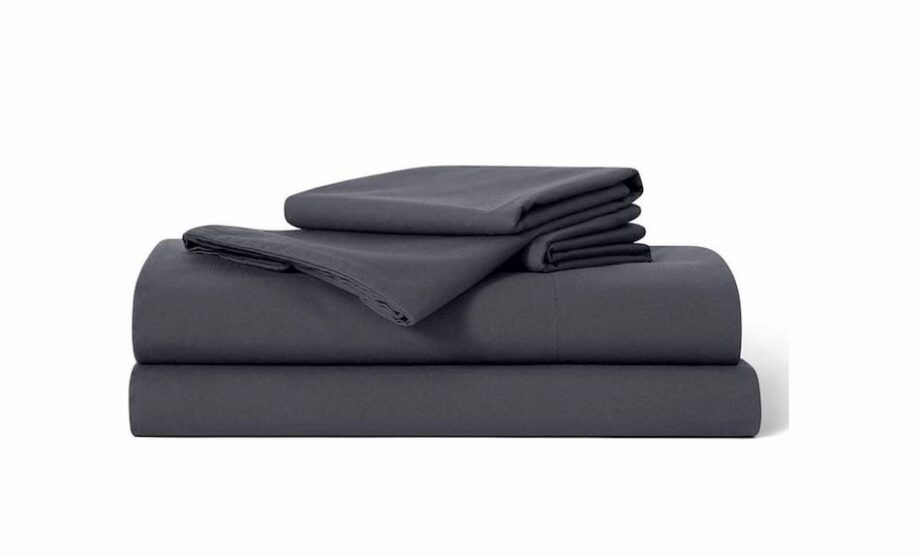
Brooklinen Luxe Core Sheet Set
Editor’s Pick
Made from a blend of Egyptian and Indian cotton, this set is soft, breathable, and durable. The 480-thread-count is unlikely to pill, and this set comes in six sizes ranging from Twin to California King and 11 colors and patterns. It includes one flat sheet, one fitted sheet, and two pillowcases, and has 15” pocket depth.
Reason to Buy: This is a quality set of sheets at a reasonable price point that checks all the boxes. You’ll find a color or pattern that matches your preferences and a fit for any mattress in your home. The high thread-count is rare to find at this price point, and Brooklinen backs the Luxe Core Sheet Set with a guarantee that includes free exchanges and replacements.
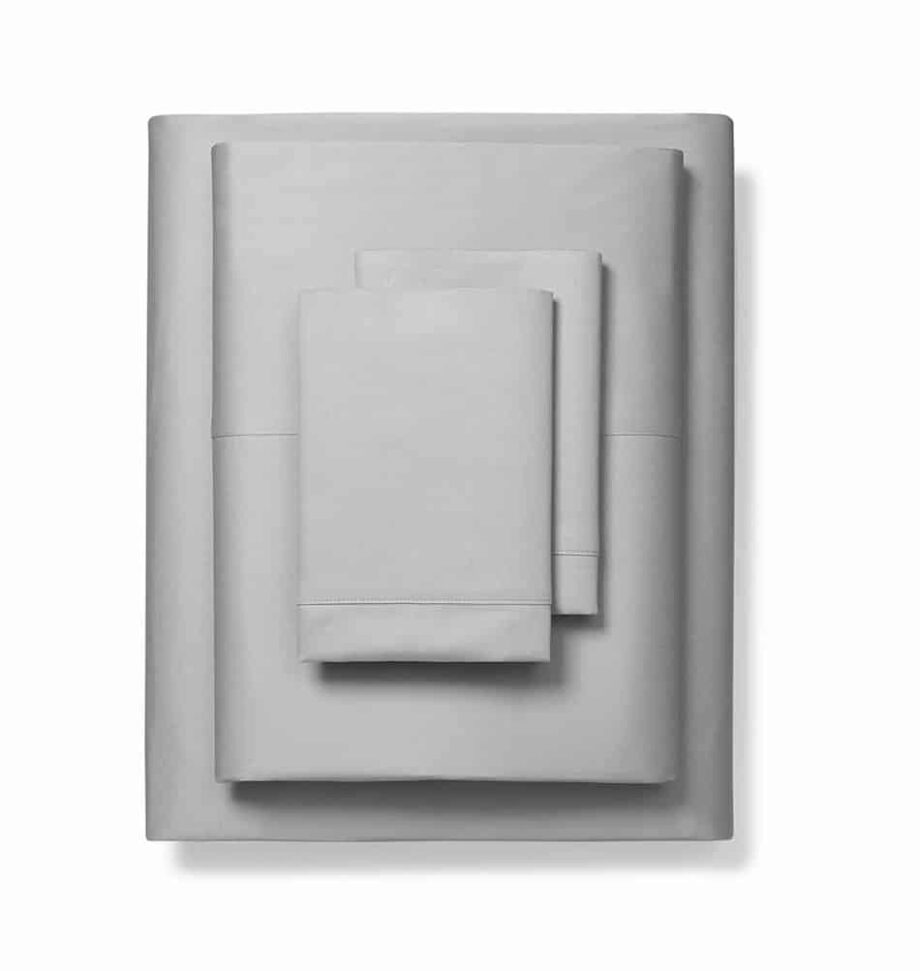
Boll & Branch Percale Tailored Sheet Set
Best Luxury
Our luxury pick is the Percale Tailored Set from Boll & Branch. They’re made from 100% cotton in a crisp, cooling percale weave through ethical production. Two pillowcases, a fitted sheet, and a flat sheet come with sets that are size Full and larger.
Reason to Buy: Boll & Branch claims that these sheets offer the “smooth, structured feel you’d find on a five-star hotel’s beds, and we agree. The texture is crisp, snappy, and smooth to the touch. Fully-elasticized, these sheets fit the deepest of mattresses (up to 17”). Not to mention, every aspect of the shopping experience with Boll & Branch has a luxury feel; your sheets arrive in an elegant box printed with the brand’s insignia and encased in a silver ribbon. You’ll receive a 30-night sleep trial with your order and can choose from eight sizes and five color options.
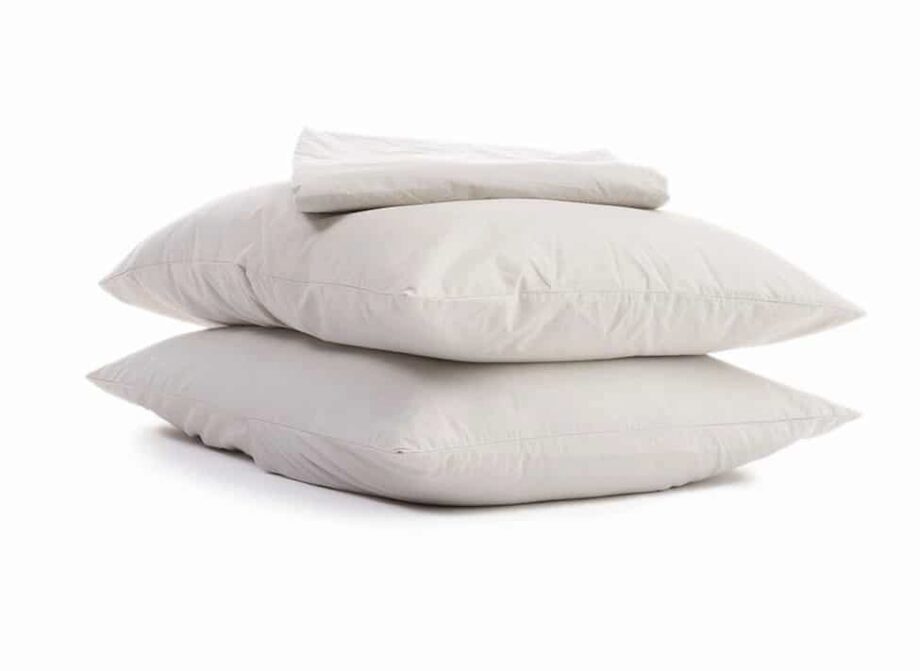
Parachute Percale Sheet Set
Best Cooling
Crafted from long-staple blended Egyptian cotton in a percale weave, these sheets are notably lightweight, breathable, and cool to the touch. All of Parachute’s bedding is Oeko-Tex 100 Certified, and this set, while not authentic Egyptian cotton, mirrors the cooling qualities of the “real deal” without a hefty price point.
Reason to Buy: If you live in a warm climate or sleep hot, this is our choice for cooling cotton sheets. You’ll receive a fitted sheet (deep pocket depth at 18”) and two pillowcases with the option to purchase a top sheet separately. Seven color options are available and Parachute’s Percale Sheet Set comes with a 90-night sleep trial.
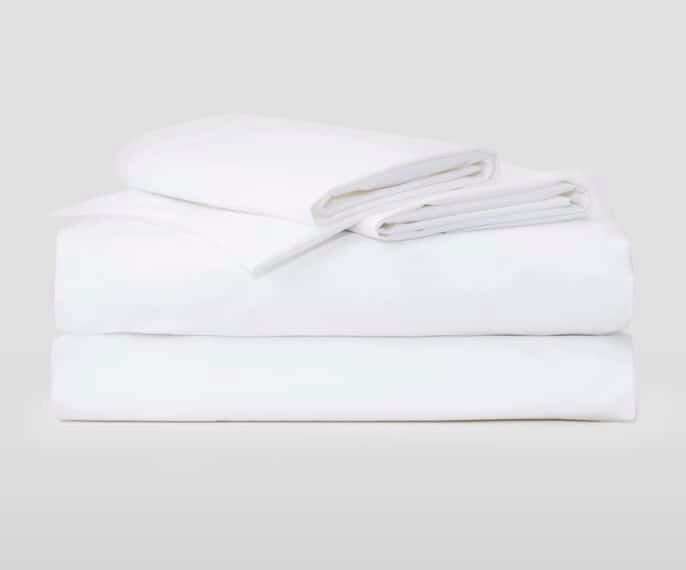
Cloudten Luna Percale Sheet Set
Best for Various Mattress Sizes
Made from 100% long-staple Egyptian cotton, the Luna Percale sheet set from Cloudten is cool, crisp, and has wrinkle resistance. Cloudten never artificially softens or chemical-washes their sheets, but the products are comfortable with first use, available in two colors, and have a clean, high-end hotel feel.
Reason to Buy: Cloudten charges a flat rate for bedding, regardless of the size or color ordered. This means that, if you’re outfitting a master bedroom or guest bedroom with a king-size bed, you’ll find remarkably affordable options. The Luna Sheet set is a safe bet for just about every sleeper type; they require straightforward care, don’t wrinkle heavily, are comfortable initially and soften with time, and they sleep cool. All Cloudten bedding sets come with a risk-free 100-night sleep trial.
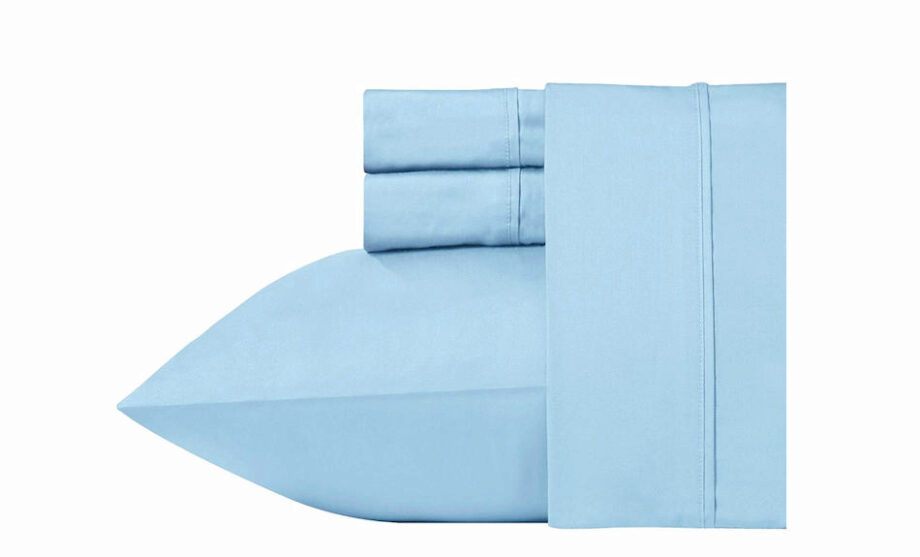
California Design Den Combed-Cotton Set
Best Value
This sheet and pillowcase set is made from long-staple combed cotton in a 400-thread-count. The California Design Den Combed-Cotton Set, which includes one flat sheet, one fitted sheet, and two pillowcases, is available in 23 colors and patterns, is Oeko-Tex 100 Certified, and has a pocket depth of 18”.
Reason to Buy: Costing less than $50 in all sizes, California Design Den sheets are exceptionally low-priced. It’s rare to find quality sheets with such a high thread count for less than $100, much less $50. California Design Den guarantees full satisfaction on all customer orders.
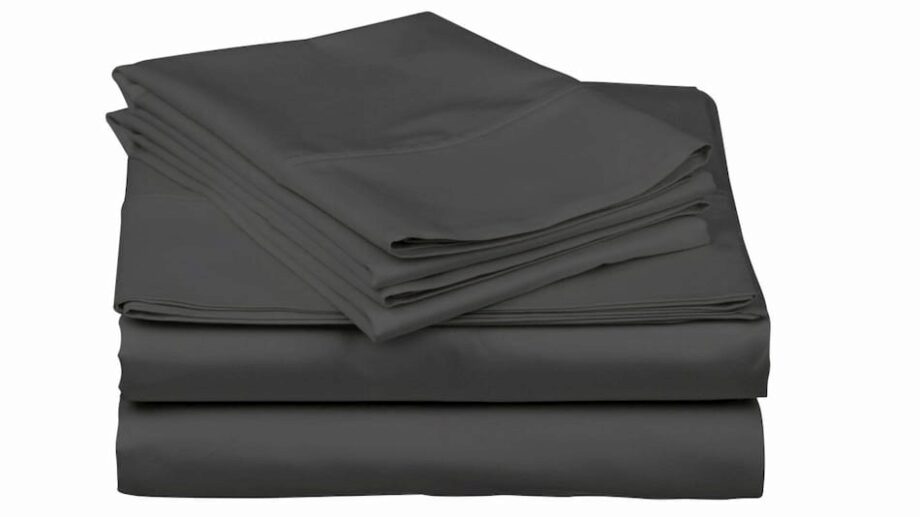
True Luxury 1,000-Thread-Count
Best High Thread-Count
Available on Amazon and made from 100% long-staple Egyptian cotton in a sateen finish, these sheets have a lustrous finish and come in more than 20 colors. They’re available in Queen, King, and California King sizes.
Reason to Buy: While high thread counts don’t necessarily lead to sweet dreams, the Amazon reviews indicate that this 1,000-thread-count True Luxury set can almost promise them. Reviewers write that they don’t sleep too hot or too cool and that the set has high-quality stitching and fabric and holds up with washes. Customers also enjoy the 4-way elastic corners for a snug, stay-put fit, and the pillowcases have a 4” hem for added class.
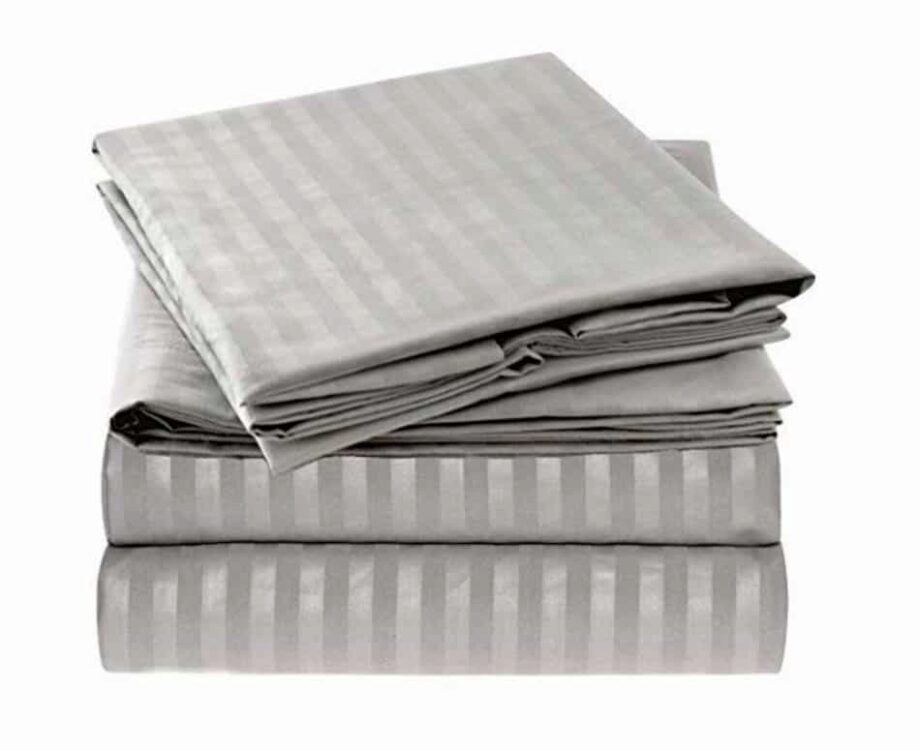
Mellanni Brushed Microfiber Sheet Set
Best on Amazon
Made from 100% polyester in seven sizes and almost 50 colors, this sheet set leverages brushed microfiber for durability and wrinkle-resistance. A flat sheet, a fitted sheet, and two pillowcases are included in each set.
Reason to Buy: With almost 60,000 reviews and nearly a perfect 5-star rating, the Mellanni Sheet Set has grabbed the attention of tens of thousands of Amazon customers. The best part? They cost less than $25 for a Queen size set. For college students and singles, or couples on a budget, these sheets have blown customers with “low expectations” out of the water. One reviewer writes, “The combination of low price, decent quality, and softness justifies the praise these sheet sets are receiving.”
Pros and Cons of Cotton Sheets
While cotton is well-known as a fabric, some of its highlights and downsides aren’t known to the general public. Here’s an overview of the pros and cons of cotton sheets.
Pros of Cotton Sheets
- Temperature regulating in most weaves, meaning that they’ll keep you cool in warm weather and warm in cool weather
- Most cotton sheets increase in softness over time and with washes
- A wide variety of variations, from flannel to percale and sateen, are available
- Easy to find in almost any color, size, style, and price point
Cons of Cotton Sheets
- Can be prone to wrinkling, so if you dislike ironing or steaming this is a consideration
- Ill-made sets can deteriorate with time and improper maintenance
- Some weaves and cotton types may take time to break in and feel soft to sleep on
How to Pick the Right Sheets for You
An essential part of your sleep experience, bed sheet sets shouldn’t be overlooked in lieu of fancy bedding and decor. They’re like an envelope for your body, contributing to or lessening the likelihood that you’ll get a great night’s sleep. Cotton sheets come in different weaves, thread counts, and have unique textures, feels, breathability levels, and moisture-wicking properties that can cater to your preferences.
Here’s a brief overview of what to consider when selecting cotton sheets for your bed:
- Seasonality – If you live in a climate that’s warm year-round, percale sheets can keep you cool. If you leave somewhere seasonal, consider sateen sheets for the winter and percale sheets for the warm seasons.
- Sleeper Type – Sleeping position doesn’t come into play very much with sheet sets, but whether or not you sleep hot does. Hot sleepers will enjoy breathable varieties of cotton bed sheets, like those made in Percale weaves and with moderate thread counts.
- Material – We recommend narrowing down by weave, first. Choose from Percale or Sateen, and then select a thread-count. Keep in mind that the higher quality materials, the more expensive and long-lasting the bedding will be.
- Return Policy – If a purchase is final, you may wind up with a product you don’t want. Read the fine print to make sure returns don’t require that the sheets be unused or neatly wrapped in the original packaging.
- Sleep Trial – It’s standard for bedding companies to offer at least a 30-night sleep trial, which can give you an opportunity to test the product out.
- Shipping – Products from Amazon often have free shipping included for Prime members, and other bedding providers have started to follow this trend as well.
- Appearance – If wrinkles bother you, consider cotton blends (like poly-cotton), which are wrinkle-resistant. Percale also tends to wrinkle more than sateen.
To learn more about how to better shop for new sheets, check out our best sheets guide.
Types of Cotton Sheets
Cotton sheets come in a variety of fabrics. The type should be a top consideration when you’re selecting cotton sheet sets, as the fabric will affect how they feel and the pros and cons of the set.
Egyptian Cotton
Usually more expensive than other types due to its strength, lengthy fibers, and breathability, Egyptian Cotton sheets are considered a luxury option. They work well as a year-round sheet and range in price depending on whether the cotton is 100% Egyptian Cotton or a blend. Be sure to keep an eye out for inauthentic varieties at high prices, and check labels for certifications to ensure the cotton is high-quality.
Pima Cotton
Otherwise known as Supima cotton, Pima is an extra-long-staple cotton that’s strong and can create soft sheets. It’s considered a close second to Egyptian Cotton in quality. Pima that’s trademarked as Supima cotton is grown in the United States.
Regular Cotton
Ordinary cotton is what’s used on many American-made products marked as 100% cotton or as a blend. It’s produced from cotton plans with shorter fibers that have less durability than Egyptian and Supima cotton, but the products made from it are much more affordable.
Considerations for sheets
Thread Count
While “1,000-thread-count Egyptian Cotton sheets” is a buzz phrase in bedding advertising and among those who are looking for their first sheet set as an adult, higher thread counts can be a marketing ploy. There’s no right or wrong with thread count, but the general recommendation is between 200 and 600. Thread counts lower than this may mean low-quality sheets prone to snags, and higher thread counts could feel heavy and hot. Luxury and high-quality sheets most often are made in 300-thread-count and 400-thread-count styles.
Weave
While there are dozens of weaves that can be used to make cotton sheets, the majority of sets are either sateen or percale. The weave is important because the way the cotton threads are woven together ultimately impacts how the final product feels. Here’s what percale and sateen weave look like and how they feel.
- Percale weave: Similar to the decorative lattice on an apple pie, percale weaves alternate in an over-under pattern. The result is a lightweight, airy, and highly breathable feel that’s excellent for warm weather or hot sleepers.
- Sateen weave: Sateen has horizontal threads that skip over multiple vertical threads. The result is a smooth, draped feel that’s cozy and decadent. Sateen weave styles also make sheets stronger and smoother. However, sateen sheets may sleep too warm for the summer months, heavyweight individuals, or those who sleep hot.
Fit, Color, and More
The fit you opt for is determined by the mattress the sheets will accompany. Most bedding companies offer sizes from Twin through California King, and some offer specialty sizes, like Split King. Browse websites to see what’s available, paying attention to key measurements like fitted sheet depth. If your mattress is on the thicker side, you’ll want to make sure the sheet set can accommodate your mattress.
Color, patterns, and other details are up to preference. If you like to change out your decor frequently, consider choosing a white, ivory, or neutral set that will pair with any bedding. Playful colors and patterns can add a pop to children’s rooms, guest bedrooms, and beach house bedrooms.
Cotton Sheets Care and Maintenance
Cotton is relatively easy to care for. Washing your cotton sheets once a week is recommended, as weekly care will prevent dust mites, release stains, and keep sheets soft. The best way to maintain good-looking cotton sheets is to wash them in low-temperature cycles, like lukewarm or cold, but hot water is required if you’ve been ill, there’s been an accident, or you’ve noticed allergens like dust mites. If you need to bleach or use a stain remover, try a color-safe or oxygen bleach on a warm setting.
How to Fold a Fitted Sheet

Conclusion
The best cotton sheets for you will depend on your preferences. We recommend using this guide as a starting point to get you started in your search. Don’t forget to check what comes in the set, the return policy, the sleep trial, and the price as you consider your options. And, remember, cotton is versatile, and it comes in a variety of thread counts, colors, sizes, prices, and weaves. There’s something out there for everyone.


